Little North Road presents the story of a pedestrian bridge in Guangzhou, China, and a community of immigrants from West Africa who were photographed on that bridge. Guangzhou, which once was known as Canton, is China’s third largest city, with over 14 million inhabitants. The city sits just south of the Tropic of Cancer in the Pearl River Delta, about 90 miles northwest of Hong Kong. Guangzhou and its surroundings comprise one of the largest manufacturing hubs in the world, and the area has become a center for international trade and commerce.
An arduous pilgrimage
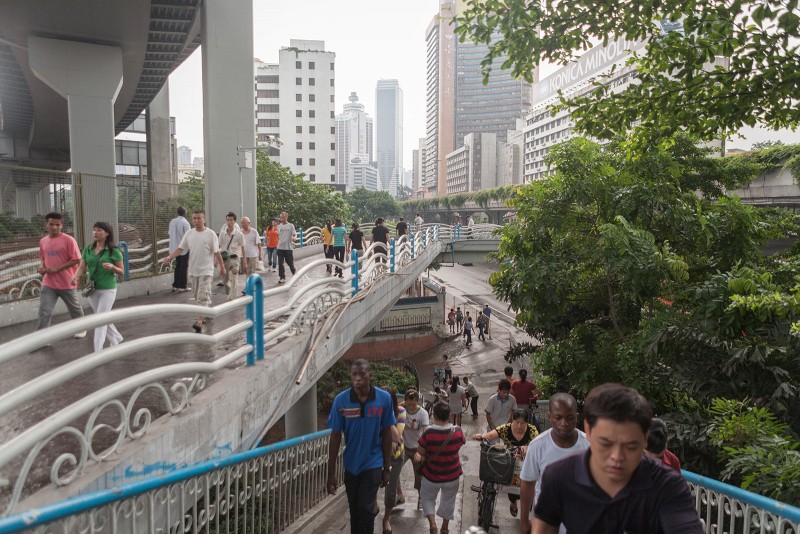
There has been a significant volume of trade between China and the countries of West Africa, and as a result, in Guangzhou, one finds visitors from West Africa seeking trade and other opportunities, as well as a community of West African immigrants who reside in the city. Indeed, one of the districts of the city, Xiaobeliu, from which the title of Daniel Traub’s exhibition is derived, is known as “Little Africa”. Needless to say, these Africans, together with immigrants and visitors from various other global communities, stand out among the Chinese.
The distance between Mali, in West Africa, and Guangzhou is a little over 7,000 miles. To put that into perspective, it’s about the same distance between New York and Yemen. The trip from Mali to Guangzhou takes close to 24 hours. You have to fly through Addis Ababa, Dubai, Lisbon, Amsterdam, Paris, or Hong Kong. It is a pilgrim’s journey. Within Xiaobeliu sits a pedestrian bridge, pictured above, which crosses over one of the city’s large arterial roads and below one of the city’s elevated highways. Any person who has risked her life trying to cross similar thoroughfares in places like Cairo can appreciate the utility of pedestrian bridges. In addition to serving as a conduit, the Guangzhou bridge became a town square of sorts: a place to congregate as well as a marketplace in which merchants of many stripes sold a variety of goods and services.
In 2009, Daniel Traub visited the bridge, and there he came upon two young young men, Wu Yong Fu and Zeng Xian Fang, who had set up shop taking pictures of pedestrians on the bridge, many of whom were Africans. Photographs were printed out and sold on the spot, and presumably many of these mementos were sent back to friends and relatives in West Africa. Traub arranged to obtain the images these photographers collected over the course of a number of years, and he ended up with an archive of some 30,000 images. Little North Road presents a selection of those images, and Traub plans to publish many more in a forthcoming book.
The task of culling images for an exhibition or for a book from an archive of 30,000 images is a formidable one. Under the circumstances, and keeping in mind that the photographs were taken by two young men who have been described as “itinerant laborers,” there is an inevitable sense of incongruity in the set of images Traub selected as a representative sample to present at Slought. While many of the portraits are intimate and poignant, many others are admittedly prosaic and repetitive.
I have somewhat randomly selected three portraits from the 85 displayed as part of Little Road North. It has been suggested that the images Traub collected, while obviously less sophisticated, are reminiscent of the portraits of the famous Malian photographer Seydou Keïta, and other African studio photographers. What I found extraordinary here is the mere fact that the community of Africans documented in Traub’s collection exists at all in China.
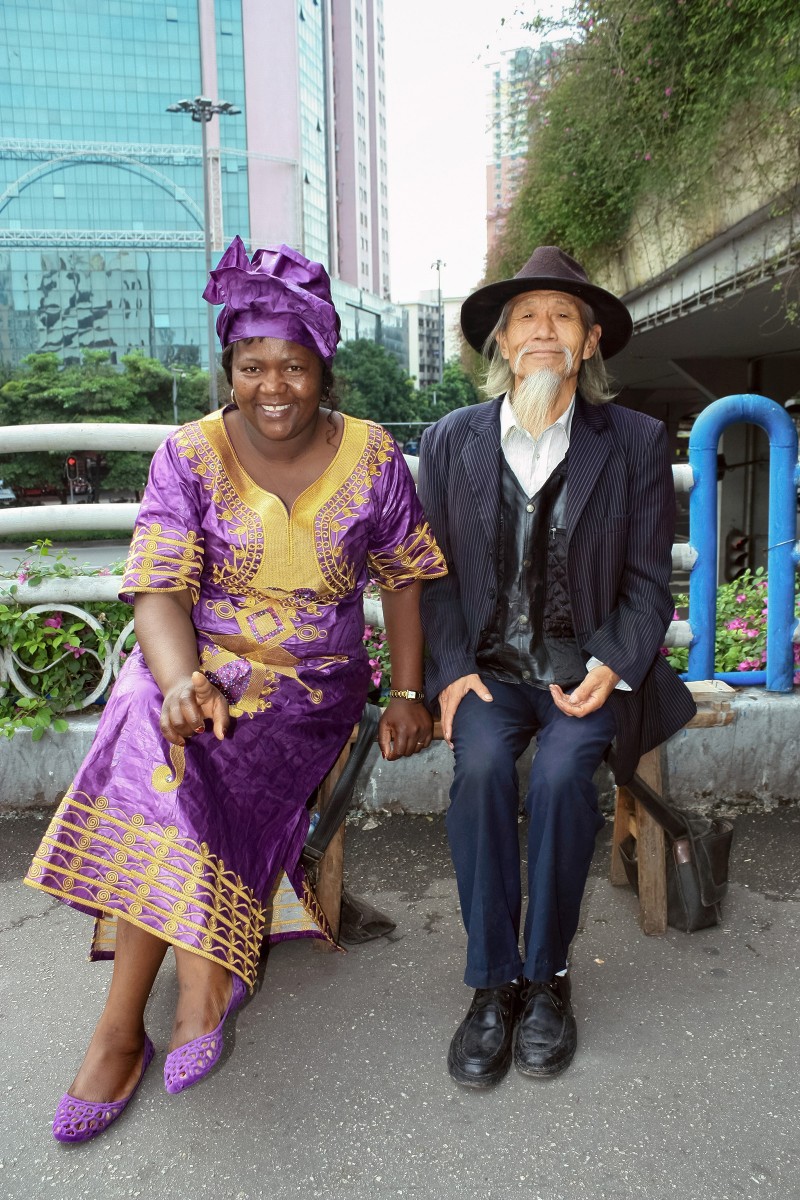
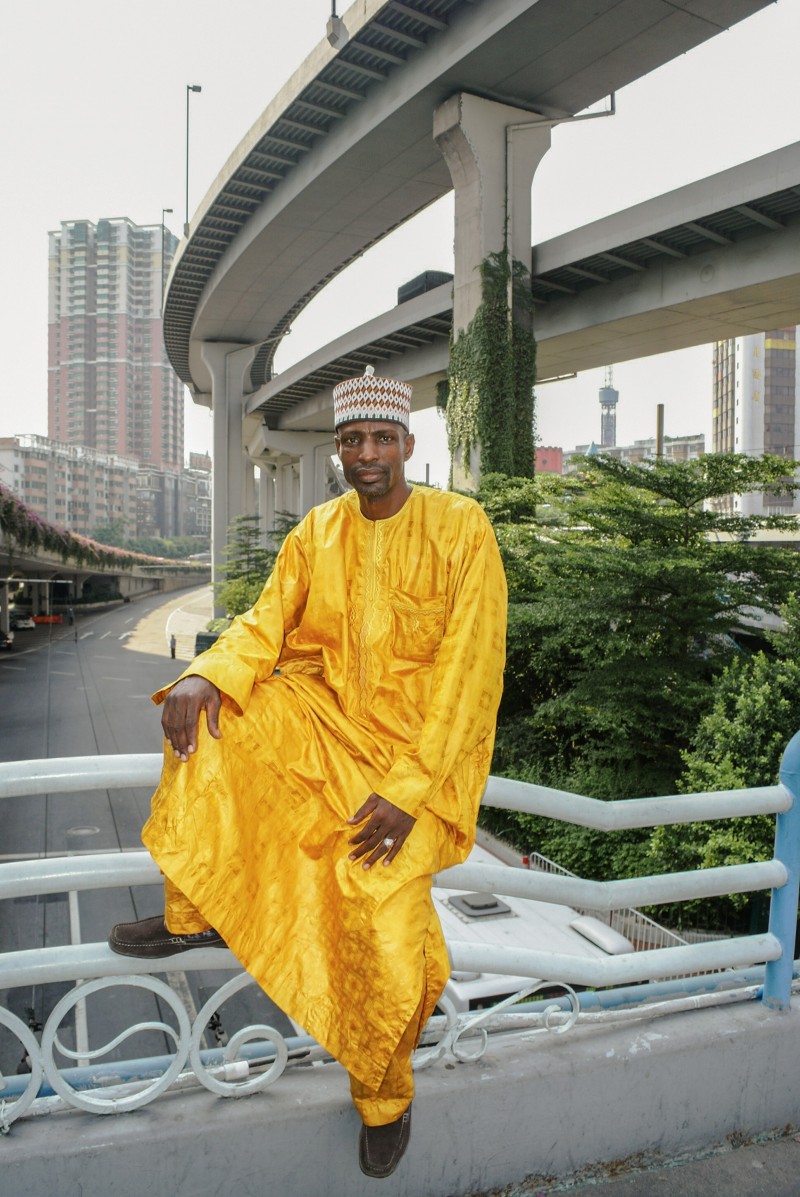
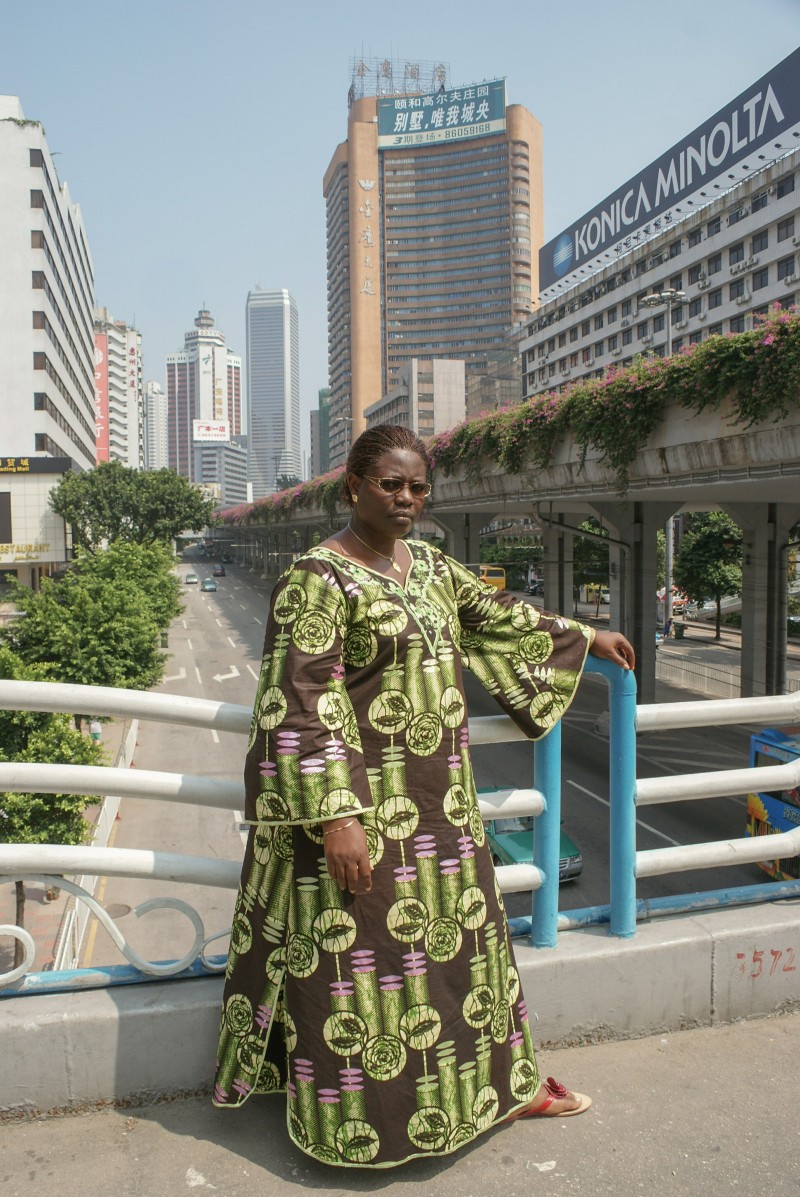
Fascinating cultural merger
In addition to the bridge portraits, Little North Road includes a short film that documents life on the pedestrian bridge, a video that contains interviews with a number of the African pedestrians on the bridge, and a series of large, wonderful photographs (one of which is reproduced below) by Traub, picturing the neighborhoods surrounding the bridge.
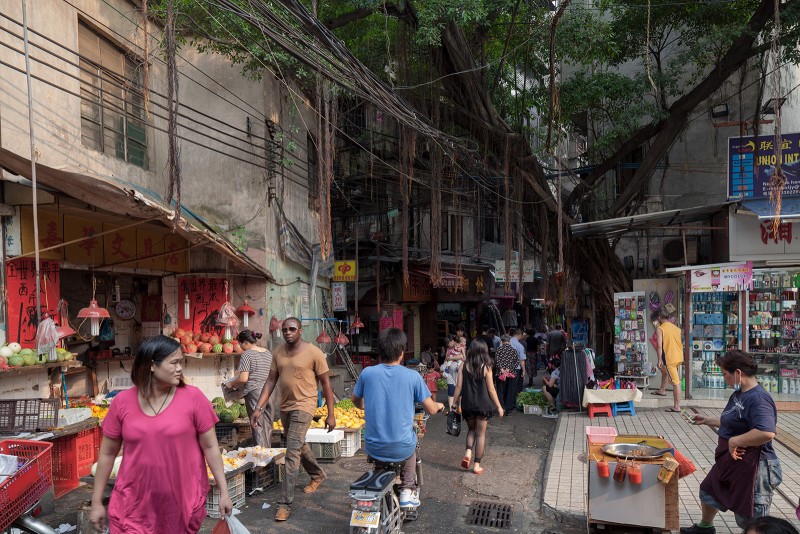
There is something fascinating, even profound, about the notion of an African immigrant community in China, as there is about the large population of Chinese, who have received much attention, now living in Africa. Little Road North is part of the narrative that documents and studies the viability of such immigrant communities.
After the last Ebola outbreak, which hit West Africa hard, China took steps to close its borders to West Africans, threatening the viability of the African community in Guangzhou. Indeed, I understand that commerce on the bridge has been suspended by the government, and that the African population in Guangzhou is declining. Sadly, this mirrors much of what is occurring in the rest of the world, including, of course, the United States, where people seem to have forgotten the extent to which migrations have enriched their cultures. Looking into the eyes of some of the individuals presented in Little Road North, I was reminded of a line from Robert Frost’s “Mending Wall”:
Something there is that doesn’t love a wall.
That wants it down.
Daniel Traub, who lived in China from 1998 through 2007, is a Brooklyn-based photographer and filmmaker. In another long-term photographic project in China, Peripheries, Traub explores the border region where urban and rural China meet. Traub’s films include “The Barefoot Artist,” the story of Lily Yeh’s collaborative artworks in war-torn communities (Yeh is Traub’s mother), and “Xu Bing: Phoenix,” which highlights the construction in China of Xu Bing’s magnificent mythical pheasants, which recently traveled from Beijing to MASS MoCA, and then to the Cathedral Church of St. John the Divine in New York. In 2014, Kehrer Veriag published a monograph of Traub’s photographs entitled North Philadelphia. Traub’s photographs have been exhibited internationally, widely published, and can be found in numerous public and private collections.
*Slought’s website includes a conversation entitled “The Bridge as Metaphor,” with Traub; Wazhmah Osman, who is a media and communications scholar at Temple University; and Slought’s executive director, Aaron Levy, in which, among other things, there is a thought-provoking discussion of the ethical issues involved in publishing these images without the consent of the subjects who were photographed.
Little North Road will be on display at Slought through November 27, 2015. On Tuesday, November 24, at 6:30 pm, there will be a closing reception and a conversation with Traub, Peter Barberie, Curator of Photographs at the Philadelphia Museum of Art, and Robert Pledge, Director of Contact Press Images.









